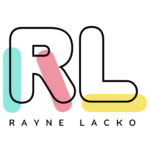http://bookmarketingmaven.typepad.com/book_marketing_maven/2010/06/back-cover-copy-that-sells-books-by-the-boatload.html
How to Craft Back Cover Copy that Sells Books by the Boatload In today’s guest post, I’m delighted to have copywriter, author and book marketing expert Eric Gelb share his tips for writing back cover copy that sells. Keep in mind that these same techniques can be used in writing sales copy for websites and other promotional materials. On a scale of 1 to 10, does your book’s back cover copy drive readers to buy your book? Back cover copy is like the packaging on a box of food or the cover of a magazine at the supermarket checkout counter. The vendor has only a few seconds to stop you in your tracks, attract your attention and compel you to make a purchase. You can also consider back cover copy to be similar to a movie trailer or preview: just two minutes that give you the plot line. Based on the trailer, you will decide whether to see the movie, or not. The same holds with your book. Your design/layout, graphics AND verbiage must entice readers and make them hungry for more. Your front cover artwork and design draw target readers in. But your back cover copy closes the sale! Since you or the author won’t be present when a reader pulls your book off the shelf, your back cover copy must do the heavy lifting to sell your book. Follow these steps to create sizzling back cover copy and sell more books: 1. List ALL the Benefits Your Book Delivers on a Blank Sheet of Paper or a Fresh Word® Document. For fiction, reveal your story’s highlights. Demonstrate why and how your story will entertain your reader. Draw them into your story; introduce your characters or at least the main one. Summarize your plot in a sentence or two. For how-to, explain the solutions you will provide, the problems your book will solve, the questions you will answer. Highlight the charts, checklists, illustrations, etc. your book features.Arrange your benefits in a punchy, concise way with action language. Right to the point. There’s no time or room for fluff. 2. Study the Back Cover Copy of Your Favorite Books and Today’s Bestsellers. For your favorites, what made you interested in the book? What about the message on the back cover attracted you? Which features can you adapt and apply to your back cover copy? Study today’s bestsellers. Pull the best ingredients and design components for your book. 3. Craft an Arresting Headline or Tagline or Consider Your Subtitle. The top of the back cover copy should be a headline or tagline, just like a direct mail sales letter (aka junk mail). Don’t use your book’s title since potential buyers have already seen your title on the front cover or spine. Give them more information. The headline should summarize your book’s theme or plot in just a few words – no more than five to eight words. Show readers what they will receive when they purchase your book. Consider my book, 52 Book Marketing Stealth Secrets. The subtitle is “The Inside Track to Become a Famous Celebrity and Sell Books by the Boatload.” If you are interested in this topic, would you want to learn more? While we offer this publication as an eBook and for licensing only, on the back cover we would feature the subtitle at the top. 4. Write a Brief Paragraph. Craft Two or Three Sentences that Explain What Your Book is All About. Elaborate on your tagline. Draw your target readers further into your book . . . make them want to read more and make a purchase. Write tight. Use your writing style – your book’s style. 5. Feature Two or Three Testimonials. Testimonials should be one to two sentences only. Perhaps a clip from a book review. Or a snippet from a fan’s letter. Praise from a peer or colleague. People feel more comfortable making a purchase when someone else endorses a product – already kicked the tires. 6. Feature Your Bio. But only two or perhaps three sentences about your background and credentials. Why are you qualified to write this book? What makes your book a winner? Think twice before you add your picture. I believe that back cover copy is very valuable “real estate.” In other words, you don’t have space to waste on non-essentials: items that don’t help you close the sale. If your photo encourages the reader to make a purchase, then consider using it. For lesser known authors [myself included], the back cover is better used to promote your book and provide the “evidence” your reader needs to definitively decide to buy your book. Put your photo inside. 7. Close with a Brief Zinger [Push] that Compels the Reader to Click “Add to Cart” or Carry Your Book to the Cash Register. Oh, and if you’re selling in retail, be sure to leave room for your bar code with your book’s ISBN and price. When you craft your back cover copy, conduct an informal test. Invite several discerning readers, book club members, English teachers and perhaps some bookstore employees to review your back cover copy. Ask them, on a scale of 1 to 10, how likely they are to buy your book. Your friends may be objective but maybe not. You need objective, unbiased feedback . . . to truly sell your book. I hope you crush the bestseller lists! Eric Gelb is an internationally recognized author, book marketing expert and copywriter. His seven books include Book Promotion Made Easy and 52 Book Marketing Stealth Secrets. Eric specializes in crafting back cover copy, author websites, press releases, and collateral material and devising innovative marketing programs. To receive Eric’s latest book marketing techniques for FREE, visit www.PublishingGold.com.

